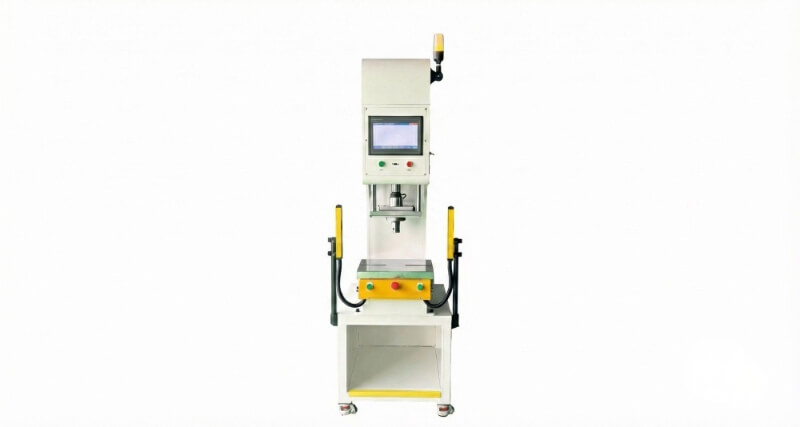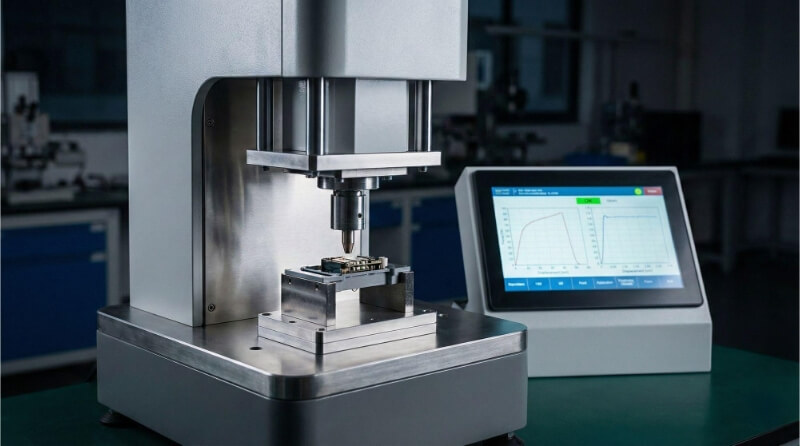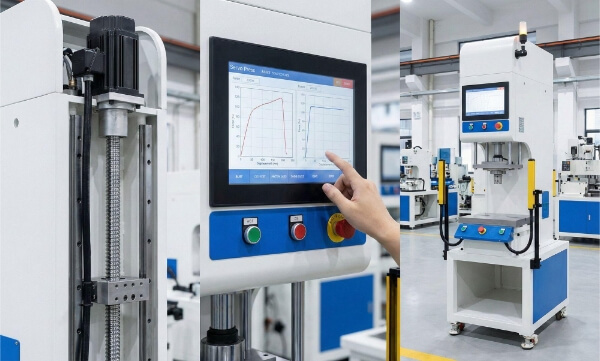What gives brushed stainless steel that sleek, matte finish? That’s brushed stainless steel for you! This article dives deep into the nitty-gritty of brushed stainless steel, showcasing why it’s a versatile and wise choice for various applications.
Brushed stainless steel is a surface treatment applied to the surface of stainless steel by sanding the surface with sandpaper or abrasives to create an even, refined, textured appearance. This treatment gives the stainless steel surface a smooth, shiny, non-reflective appearance while improving its resistance to scratching and abrasion.
Curious to know more? Let’s dive into what makes it a choice for professionals and how it can benefit your projects, too.
Basics of Brushed Stainless Steel
The Brushing Process
What is brushed stainless steel?
Shengen uses brushing to improve the surface finish of stainless steel. This technique involves a satin finish applied in a single direction, giving the metal an attractive look. The pattern of fine lines runs parallel to the direction of the brushing. Brushing is not only about aesthetics. It also adds a layer of corrosion protection, which makes the material more durable.
How to Brush Stainless Steel?
Preparation: Clean the stainless steel surface to remove dirt, grease, or existing coatings. Ensure the area is well-ventilated and you’re wearing appropriate protective gear.
Selecting the Right Grit: Start with a coarser grit abrasive pad or sandpaper. The grit you choose will depend on the existing finish of the stainless steel and how pronounced you want the brushed effect to be.
Brushing Direction: Determine the direction of the grain of the stainless steel. You’ll want to brush parallel to this grain to achieve a uniform look.
Manual Brushing: If using a manual brush, apply consistent pressure and move the brush back and forth along the grain. This can be labor-intensive but allows for more control over the finish.
An electric hand tool with a brush wheel or belt may be more efficient for larger surfaces or a more uniform appearance.
Graduating Grits: Once you’ve achieved the desired level of abrasion with the coarser grit, switch to a finer grit to smooth out the texture. This progression helps create a more refined brushed finish.
Continue until you’re satisfied with the texture and appearance.
Cleaning Up: After brushing, thoroughly clean the surface to remove metal dust or debris. Wipe down with a damp cloth and then dry thoroughly to avoid water spots.
Final Inspection: Examine the brushed finish, ensuring it’s uniform and meets your desired aesthetic.
Techniques and Tools Used for Brushing Stainless Steel
Using the right tools and techniques when brushing stainless steel is essential to achieve the desired texture and finish. Here are some standard methods:
- Abrasive Wheels and Belts: Tools coated with abrasive material create linear scratches on the steel surface. You can vary the grit of the abrasive to get different degrees of coarseness.
- Stainless Steel Wire Brushes: Wire brushes are often made of steel, brass, or nylon and used to achieve a more prominent texture. The hardness of the wires used in the brush can affect the final appearance. The desired result and the type and quality of stainless steel dictate the choice of tool.
- Automated machines: Manufacturers use these tools for large-scale production to ensure consistency. These machines can handle sheets or parts and apply a uniform surface quickly.
Types and Applications of Brushed Stainless Steel
Grades and their Uses
Different grades of brushed stainless are available to meet specific industry needs. I have seen how the grade you choose can make a significant difference in the performance and look of your final product. Here are some common grades:
- Grade 304: 304 is the most commonly used stainless steel. It offers excellent corrosion resistance against many chemicals and industrial environments. Generally, experts consider ’18/8 stainless steel as the standard, ideal for many commercial and household applications.
- Grade 316: Due to its higher resistance to corrosion and the high molybdenum contents in 316, it is particularly suitable for environments like saltwater or exposures. Manufacturers often use this material for marine and pharmaceutical equipment.
- Grade 430: Manufacturers use this grade in indoor appliances, food equipment, and roofing.
It is essential to choose the correct grade for your application. Each grade has unique benefits and composition. Factors such as the environment, chemical exposure, and aesthetics determine the best grade.
Comparison of Brushed vs. Polished Stainless Steel
Brushed and polished stainless steel finishes are the most popular, offering each a unique look and feel.
- Brushed Stainless Steel: This finish, characterized by a fine texture and polish running in a uniform direction, hides fingerprints and minor imperfections due to its muted luster rather than a high shine. This material is popular for backsplashes and appliances requiring scratch-resistant, consistent surfaces.
- Polished Stainless Steel: This style has a highly reflective finish and is polished to resemble a mirror. This eye-catching style is used for decorative fixtures, architectural trim, and automotive detailing. It can also show fingerprints and scratches much more quickly than brushed surfaces.
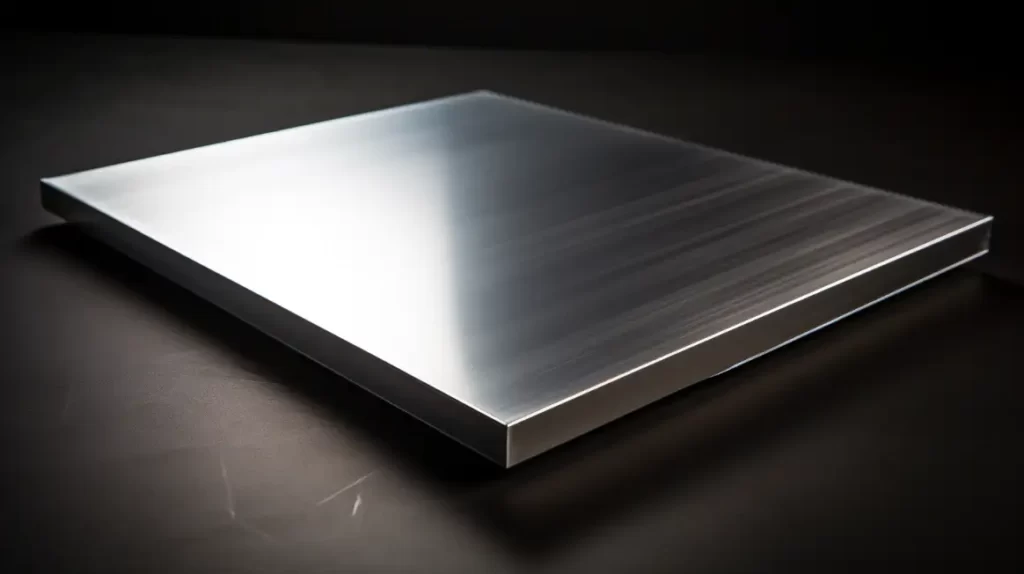
Characteristics and Properties
Physical Properties
As technical director of Shengen, I am proud of brushed steel’s physical strength and versatility. Here are some of the key features:
Durability
Brushed stainless is known for its durability. This material is durable and can withstand physical impacts. It’s ideal for industrial machinery, kitchen appliances, and other heavy-duty applications. The steel’s durability is due to its alloy composition, especially the addition of elements such as chromium or nickel that enhance strength and malleability.
Our clients love the durability of brushed stainless steel. Items of brushed stainless steel can last decades without losing structural integrity or aesthetic appeal when correctly produced and maintained. Its durability makes it an excellent investment for long-term strength and reliability applications.
Resistant to Corrosion
The brushed stainless steel also has a corrosion resistance. This is due primarily to the high chromium content of stainless steel. It forms a layer of chromium dioxide on the surface that protects the metal beneath from moisture and oxygen, which can cause corrosion and deterioration.
This process also enhances the protective layer by smoothing and compacting the surface. It reduces the crevices that could accumulate corrosive substances. Brushed stainless steel is an excellent choice for environments with moisture or chemicals, like coastal areas, medical settings, and kitchens.
Aesthetic Qualities
Designers highly value brushed stainless steel, which combines form and function, for its aesthetic appeal. Here’s what makes it stand out:
Texture & Appearance
Its texture is one of the most distinguishing features of stainless steel brushed. The brushing creates fine lines in a uniform pattern that runs in the exact directions. The unidirectional surface not only adds to the sleek, modern appearance of the metal but also catches light subtly, giving it a soft and luminous look. It is also pleasing to touch, with smoothness and quality evident in its craftsmanship.
Its brushed finish is sophisticated and versatile, which makes it popular in architecture, automotive finishes, and home appliances. The understated elegance of brushed stainless steel complements many styles, from industrial to contemporary. Its surface can hide fingerprints and other minor imperfections, which are more noticeable on glossy or polished materials.
Color and Refraction Variations
The color of brushed steel is neutral and silvery grey. However, it can show different shades and reflectors depending on lighting and angle. The fine lines in the brushed texture scatter the light and give the surface a muted shine instead of the polished finish’s sharp, reflective finish. Designers and architects are attracted to this material because it is functional and has a sophisticated appearance.
Brushed stainless steel and its natural color can be tinted or colored through processes such as anodizing and coating. It can be customized and used creatively. This adds another dimension to the appearance of brushed stainless steel. The variations in color and reflection, whether left in their natural state or colored, contribute to brushed steel’s adaptability and dynamic nature.
Applications
In Architecture of Brushed Stainless Steel Finish
Exterior & Interior Applications
Brushed stainless is a highly durable and versatile material. Interior and exterior architectural applications can use this style. The material’s ability to resist corrosion and tarnishing, combined with its sleek look, makes it perfect for outdoor environments. It can withstand harsh weather while still maintaining its aesthetic appeal. Exterior applications include building cladding and roofing, outdoor furniture, and public art installations.
You can use brushed stainless steel in various ways, including decorative accents, wall panels, columns, railings, and staircases. The ability of brushed stainless steel to create an industrial, modern look while being both practical and easy to maintain makes it a favorite choice for commercial and residential buildings. Reflective properties of the material can help brighten rooms and give an impression of more space. This is an excellent attribute for interior design.
Iconic structures Featuring Brushed Stainless steel
Brushed stainless is more than just a choice of material; it’s also a statement in design. Several iconic structures worldwide have used brushed stainless steel. Some notable examples include:
- New York City’s Chrysler Building: Stainless steel makes the crown and spire of this classic Art Deco building. This contributes to its timeless, gleaming appearance.
- The Walt Disney Concert Hall, Los Angeles: The building is covered in brushed stainless steel, giving it a flowing, dynamic appearance.
- Helix Bridge, Singapore: This pedestrian bridge is made of stainless steel and has a spiraling canopy. It shows off the material’s strength and flexibility.
Home and Decor of Brushed Stainless Steel Finish
Appliances for the Kitchen
The kitchen is the most popular place to use brushed stainless steel in decor and at home. The combination of its resistance to heat and corrosion and sleek, professional appearance makes it the preferred material for appliances like refrigerators, range hoods, ovens, and dishwashers. It gives kitchens a sleek and modern look and ensures appliances will last for years.
Kitchen appliances such as sinks, taps, and backsplashes also use brushed stainless steel. The easy-to-clean surface and its resistance to water damage make it an excellent choice for areas prone to moisture or frequent cleaning. The material’s texture is excellent at hiding fingerprints and water spots, so kitchen fixtures look clean and polished without much effort.
Accent Pieces and Furniture
Other parts of the house use brushed stainless steel for accent pieces and furniture. The strength and stability of brushed stainless steel are perfect for creating frame structures that are sleek and stable for tables, shelving units, and chairs. This creates a modern industrial feel in the decor, with reflective qualities enhancing the design.
Industrial and Automotive Applications of Brushed Stainless Steel Finish
Machines and Equipment
Various industrial machinery and equipment use brushed stainless steel. The strength, resistance to corrosion, and the high temperatures of brushed stainless steel make it an excellent choice for many industrial applications. It is used for various applications, including medical equipment, pharmaceutical lab equipment, and food processing equipment. Brushed stainless steel’s easy-to-clean and maintain properties make it a popular choice in environments with high corrosiveness, aggressiveness, or strict hygiene requirements.
Its durability ensures that equipment can withstand industrial use and reduce downtime. The ability to fabricate complex shapes and compatibility with different welding techniques make it an excellent choice for custom machinery.
Automotive Components and Detailing
The automotive industry uses brushed stainless steel for its aesthetic and physical qualities. It’s also used externally in grilles, trim, exhaust systems, and other details that benefit from its sleek, durable surface. Its resistance to rusting and tarnishing makes it an excellent choice for exposed parts, which helps vehicles maintain their appearance over time.
In the interior, manufacturers use it for structural elements, fuel tanks, exhaust systems, and other components. Brushed stainless steel’s high temperature and corrosion resistance are ideal for automotive applications. Manufacturers use stainless steel in performance and luxury cars for its lightweight properties and strength. This contributes to efficiency and safety.
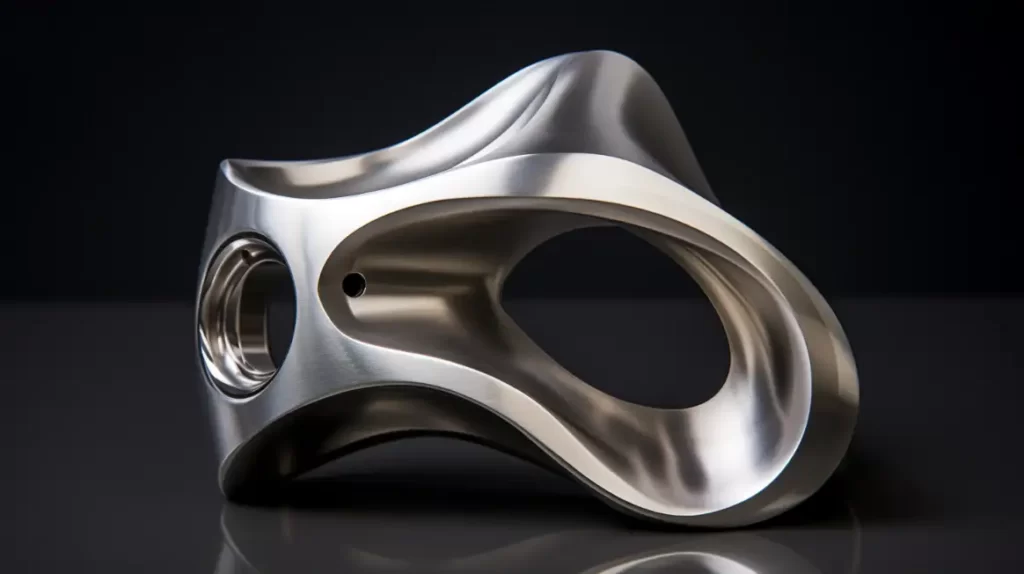
Maintenance
Cleaning Brushed Stainless Steel
Routine Cleaning Methods
Routine cleaning is the best way to maintain the sleek appearance of brushed stainless steel. To remove fingerprints and other light stains, use a soft sponge or cloth with warm water, mild detergent, and gentle soap. To avoid scratching the brushed surface, cleaning or polishing with the grain is essential. Rinsing the fabric with clean water and then drying it with a cloth or towel will help prevent water marks and keep its lustrous finish.
Baking soda mixed with water is a mild abrasive that can remove tougher stains and buildup. There are also specialized stainless steel cleaners that can remove stubborn stains and polish the surface.
How to Deal with Scratches and Stains
Although brushed stainless is durable, it can still be scratched and stained. A non-abrasive blending pad can blend minor scratches into the existing finish. Work gently along the grain. Deeper scratches or dents may require professional repair or replacement.
Determining the cause of stains is crucial before you can treat them. You can treat rust stains with baking soda and water or use a specialized rust-removing product. Steel wool and abrasive brushing can damage the material’s surface, reducing corrosion resistance.
Long-Term Care
Preservation Techniques
Protecting its surface and preventing damage is essential to maintain the corrosion resistance of brushed stainless. It is important to avoid contact with harsh chemicals or chlorides, which can damage the protective layer made of chromium dioxide. It is essential to clean the material immediately if it comes into contact with any potentially harmful substances. This will prevent staining and corrosion.
Regular inspections will also allow you to identify problems early, such as scratches and exposed areas susceptible to rust. By addressing these issues quickly, you can keep stainless steel in good shape and prolong its life.
Products and Tools Recommend
Use products and tools designed specifically for stainless steel. Maintaining the integrity and appearance of the surface can be achieved by using non-abrasive polishes and cleaners. Use soft cloths, microfiber towels, or sponges to clean and dry the material. They won’t leave any residue or scratch.
Look for pH-balanced cleaning products that do not contain harsh chemicals or chlorides. White vinegar mixed with water is an effective cleaner. Mineral, olive, or olive oil can protect and polish the surface.
Sustainability Impact
Manufacturing Impact
Energy Consumption in Production
Producing stainless steel is energy-intensive, given its widespread use in many industries. This includes brushed versions. Melting and casting raw materials is energy-intensive, especially the melting of nickel and chromium. Rolling, cutting, and brushing also require significant electricity and resources. We constantly look for ways to improve these processes and reduce energy consumption. We invest in equipment and technologies that reduce the energy needed for production while maintaining the quality of our stainless products.
Recycling and Sustainable Efforts
Recyclability is one of the significant environmental impacts of stainless steel. Stainless steel has a longer lifecycle than other materials due to its durability and longevity. When stainless steel products end their valuable lives, one can quickly melt and reform them into new products without losing quality. This recycling process reduces the need for raw materials and the environmental impact of mining and processing.
Consumer Perspective
Environmental Footprint and Lifespan
The appeal of stainless steel brushed is often based on its durability. This durable material lasts for many years, even when used rigorously. This longer lifespan results in fewer replacements and a reduced environmental impact over time. By investing in high-quality stainless steel brushed products, consumers get a product with a long lifespan that contributes to less wastage and reduced demand for resources.
Making Sustainable Choices
When making sustainable choices, consumers should consider the following factors:
- Durability: Choosing high-quality stainless steel products will ensure a longer lifespan and reduce the need to replace them frequently.
- Recycling: Understanding stainless steel’s recyclability and selecting products from companies prioritizing recycled materials will make a big difference.
- Maintenance: It is essential to consider the maintenance needed to maintain the product. Brushed stainless is low-maintenance, but it can last longer with proper care.
- Environmental Policy of Supplier: Consumers should look for manufacturers and suppliers like Shengen who are transparent in their environmental policies and energy usage.
Purchasing Guide
What To Look For
Identifying Brushed Stainless steel
It is essential to choose high-quality materials when purchasing brushed stainless steel for industrial, construction, or home decor purposes. This will ensure durability and performance. Here are a few tips:
- Check the Grade: It is essential to understand the grade of stainless steel. Choose the most suitable grade for your needs. For example, 304 or 316 offer excellent corrosion resistance and strength.
- Surface Finish Quality: Examine the surface finish quality. It should be uniform, without any irregularities or patches. The finish should be uniform and not look ‘crosshatched ‘.
- Thickness: Stainless steel of higher quality will be thicker, heavier, and more durable.
- Standards and Certifications: Verify that the product meets applicable standards and certifications. This can give assurances of its quality.
Budgeting and Price Considerations
The price of brushed stainless steel depends on many factors, such as the finish, the grade, and the complexity. Budgeting can be done by considering the following factors:
- Long-Term Investment: While higher grades of stainless steel and better quality may cost more upfront, they can be better investments in the long term.
- Comparative Shopping: Compare prices and quality of products to find the best deal. Consider the value of the product, not just the price. Also, consider its lifespan, maintenance requirements, and aesthetic appeal.
- Bulk Purchasing: If you are undertaking a significant project or require a large quantity, consider bulk purchasing, which may offer a lower price per unit.
- Avoid overly cheap options: Low prices may indicate poor quality materials or inferior products. It is often worth spending a little more on a product that will last longer and perform better.
Conclusion
From its production and physical properties to its applications and upkeep, we’ve covered the most critical aspects of brushed steel. Understanding these aspects allows consumers, designers, and manufacturers to make informed choices and use the correct type of stainless steel.
Do you need a reliable sheet metal parts manufacturer? Shengen is the place to go. We specialize in sheet metal laser cutting, bending, surface finish, and sheet metal welding. We place a high priority on establishing trust, maintaining standards of quality, providing competitive prices, and guaranteeing timely delivery.
FAQs:
How is brushed stainless steel different than other finishes?
Fine, consistent lines characterize the matte finish of brushed stainless steel. This gives it a unique texture with a subdued shine. The steel is polished using a belt or brush to produce these unidirectional stripes. The brushed finish is less reflective and smoother than polished stainless steel. It also conceals fingerprints better than mirror finishes.
Is brushed nickel the same as stainless steel?
No, brushed Nickel and stainless steel are not the same. Brushed nickel gives a slightly warm golden color to nickel-based materials or brass. On the other hand, stainless steel is an iron alloy that contains a large amount of nickel and chromium, giving it its corrosion resistance. The term “brushed” refers to a texture applied to their surface, meaning that both metals can have the same brushed finish but differ in base materials and properties.
How to clean brushed stainless steel?
Follow these steps to clean stainless steel brushed:
- Use a damp cloth: Gently clean the surface with a soft, damp cloth.
- Use a mild detergent: Add a few drops to the cloth if you have stubborn dirt.
- Follow the grain: Always wipe in the direction of the metal’s grain to avoid scratching.
- Rinse the area with water: After cleaning, wash the area with water to remove soap residue.
- Dry immediately: To prevent water spots, dry immediately. Use a towel or cloth that is completely dry. Avoid harsh chemicals or abrasive products as they may damage the brushed surface. Use a stainless steel cleaner or a paste of baking soda and water to remove tougher stains gently.
Is brushed stainless steel suitable for outdoor use?
Brushed stainless is ideal for outdoor applications, particularly in the grades designed for exterior use. Its resistance to corrosion and tarnishing makes it an ideal material for outdoor furniture and architectural features.
More Resources:
Stainless steel grades – Source: Unifiedalloys
Stainless Steel Finishing Options – Source: Metal supermarkets
Stainless Steel Market Size – Source: Grandview research
HEY, I'M Kevin Lee

For the past 10 years, I’ve been immersed in various forms of sheet metal fabrication, sharing cool insights here from my experiences across diverse workshops.
Get in touch

Kevin Lee
I have over ten years of professional experience in sheet metal fabrication, specializing in laser cutting, bending, welding, and surface treatment techniques. As the Technical Director at Shengen, I am committed to solving complex manufacturing challenges and driving innovation and quality in each project.

